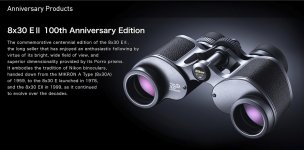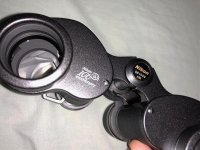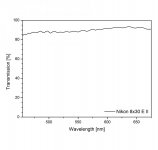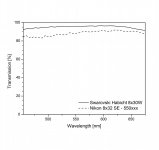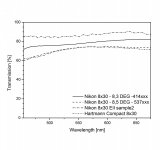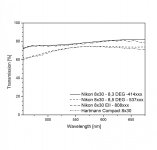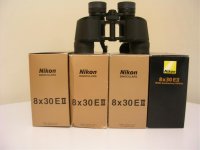John A Roberts
Well-known member

To mark its 100th anniversary in June 2017, Nikon offered several products. It:
- produced several limited edition cameras and accessories
- introduced the remarkable WX binoculars, and
- produced a limited edition of the EII 8x30 comprising 400 units
see the screen grab from the now closed 100th Anniversary site
EII 8x30 Anniversary Edition Coatings
Tobias Mennle has previously commented on the increased brightness of the EII 8x30 Anniversary Edition: https://www.birdforum.net/showthread.php?t=364271
The thread also links to the full review on Tobias’ site, where he notes that while the image is both brighter and more neutral, it’s still darker than that of the Swarovski Habicht 8x30 Porro
Upgraded Regular Production
It seems that the change to the Anniversary Edition coatings have also been applied to the regular production
e.g. among others, both Dennis/ Denco and Peter/ wllmspd have commented favourably on the brightness of recently acquired EII 8x30’s, see: https://www.birdforum.net/showthread.php?t=380831
As this is a significant change, it seems worthwhile to draw it to the attention of those contemplating a purchase
At the latest, regular production 8x30 units from #821,110 should have the improved coatings - and perhaps from as early as #820,000 - see the explanation below
continued . . .
- produced several limited edition cameras and accessories
- introduced the remarkable WX binoculars, and
- produced a limited edition of the EII 8x30 comprising 400 units
see the screen grab from the now closed 100th Anniversary site
EII 8x30 Anniversary Edition Coatings
Tobias Mennle has previously commented on the increased brightness of the EII 8x30 Anniversary Edition: https://www.birdforum.net/showthread.php?t=364271
The thread also links to the full review on Tobias’ site, where he notes that while the image is both brighter and more neutral, it’s still darker than that of the Swarovski Habicht 8x30 Porro
Upgraded Regular Production
It seems that the change to the Anniversary Edition coatings have also been applied to the regular production
e.g. among others, both Dennis/ Denco and Peter/ wllmspd have commented favourably on the brightness of recently acquired EII 8x30’s, see: https://www.birdforum.net/showthread.php?t=380831
As this is a significant change, it seems worthwhile to draw it to the attention of those contemplating a purchase
At the latest, regular production 8x30 units from #821,110 should have the improved coatings - and perhaps from as early as #820,000 - see the explanation below
continued . . .
Attachments
Last edited:





